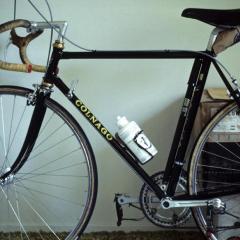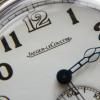-
Recently Browsing
- No registered users viewing this page.
-
Topics
-
Posts
-
As you've possibly guessed from my profile my name is Andy and I live in the North West. I started collecting and repairing watches about 30 years ago and been off and on with them throughout the years as circumstances have changed. About 18 months ago I got back into collecting and repairs and have been slowly building my collection and workshop back up. My go to watches have, and probably always will be Seiko (including Lorus & Pulsar) although I'll consider anything that takes my fancy. I'm not into expensive watches as I like to just wear them without too much worry of damage, or these days getting robbed for them. I've joined in the hope that I'll be able to receive some help on current and future projects and also assist others with what I've picked up over the years. Here's a couple of my recent repair additions both for their 'Dancing Hands' feature, although the Accurist isn't in the same league as the Seiko
-
Very rarely need to do this in a watch (as opposed to a clock) since usually the holes in thinner parts are jewelled and the ones that need bushing are the larger ones with more metal around them e.g. the barrel or centre wheel, but I have an example of a hammer pivot running in a thin part of the main plate of a repeater which has too much side shake and needs sorting. Are there any tricks to doing this, or should I (reluctantly) be thinking of the domed punch - which normally I'd avoid. I'd like to add a photo but this is only really visible under the microscope and my microscope doesn't have a camera attachment.
-
JJenkins...thank you for the response. I don't believe these models have a bezel that tightens down. The crystal is removed/inserted into the top of the case using a crystal lift/remover, and fits in tightly. Once the crown and crystal are removed, the movement can be removed out the front of the case. Geotex...thank you very much for your response. Thank you for sharing your knowledge of how the watch parts fit together, and for the tip about the groove in the case, and the washer on the crown. I'll post back on here whenever I can find the time to work on the watches.
-
After a long delay, I finally got the shock springs reinserted! I taped down the small bridge that held the jewel to my steel riveting anvil so it wouldn't move around and that helped a lot. The spring on the main body was easy in comparison. I purchased 25 springs from H&W Perrin in Canada ($9 with shipping) and found a good fit for the one I lost. Alex has great videos, which helped me with the spring. This Westclox with a Seiko movement is fighting me every step of the way. I'm sure it was never serviced. Almost every screw was frozen and needed a good soaking. The transmission fluid/penetrating oil combo worked best. The good news is that everything is in great shape.
-
Hello all, I'm reactivating this old thread with a question. I've of course watched Marc's video. I'm just wondering if that pin in the center of the anvil he's making (on the lathe to push out the bearing) is really necessary. I have an anvil that has a hole just the right size to fit the bearing and hold the rotor, but it doesn't have that center pin. I've seen other videos online where people do without the pin. Cheers
-




.thumb.jpg.cb17a66989f1e796fd4217db2e9ca9df.jpg)
Recommended Posts